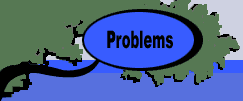Three products can be produced at two machining centers. The products
may be produced in fractional amounts. The linear relationships
describing this situation are listed below. The variables are:
A, B and C are the amounts of the three products in units.
R1 and R2 are the amounts of raw materials
used in kilograms.
T1 and T2 are the times used in the
two machining centers.
Linear expressions describing important quantities associated
with the products have been derived and are shown below.
|
Profit:
|
P = 2A + 3B + 2.55C - 0.6R1 - 0.8R2
|
|
Time required on machine 1:
|
T1 = 0.5A + 0.8B + 1C (hours)
|
|
Time required on machine 2:
|
T2 = 0.8A + 0.6B + 0.2C (hours)
|
|
Raw material 1 used:
|
R1 = 0.1A + 0.2B + 0.075C (kilograms)
|
|
Raw material 2 used:
|
R2 = 0.05A + 0.1B + 0.05C (kilograms)
|
|
Market Limits:
|
A <= 100, B <= 200, C <= 100.
|
The linear programming model when objective is to maximize
profit is:
Max Z = 2A + 3B + 2.5C - 0.6R1 - 0.8R2
subject to:
|
Machine 1:
|
0.5A + 0.8B + 1C <= 100 (hours)
|
|
Machine 2:
|
0.8A + 0.6B + 0.2C <= 100 (hours)
|
|
RM 1
|
0.1A + 0.2B + 0.075C - R1 = 0
|
|
RM 2:
|
0.05A + 0.1B + 0.05C - R2 = 0
|
|
Market:
|
A <= 100, B <= 200, C <= 100.
|
|
Nonnegativity:
|
A >= 0, B >= 0, C >=
0, R1 >= 0, R2 >= 0. |
The following paragraphs describe modifications of the situation.
The modifications are not cumulative. Show the changes in the
model necessary to describe the new situation. Some changes
require the introduction of integer variables while others require
the incorporation of nonlinear functions. In either case add
as few variables as possible.
When the model uses integer variables it must have the linear
form.
a. The revenue for each product is reduced by an advertising
cost as illustrated in the figure for product A. In order to
sell any A, $40 must be expended. If no A is sold, the cost
is not expended. Product B and C have similar advertising costs,
$5 for B and $60 for C.
b. The raw material costs are nonlinear in the following fashion.
- Raw Material R1: The unit cost for the first 50 kilograms
is $0.60 per kg.. The unit cost for amounts greater than 50
but less than 100 is $0.70 per kg. The unit cost for purchases
above 100 kg. is $0.75 per kg..
- Raw Material R2: The unit cost for the first 50 kilograms
is $0.80 per kg.. The unit cost for amounts greater than 50
but less than 100 is $0.75 per kg. The unit cost for purchases
above 100 kg. is $0.70 per kg..
c. Add the logical restriction that if you produce more than
20 of product A, then you must produce at least 5 of product
B.
d. We specify that you can produce at most two of the three
products.
|





